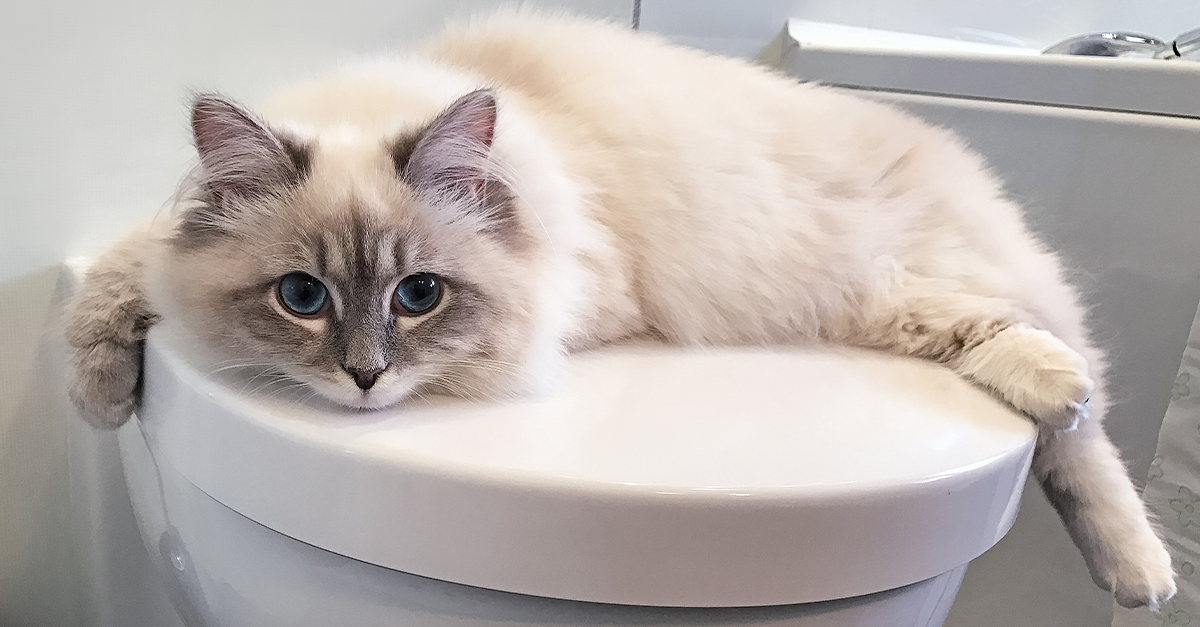Potential Risks of Flushing Cat Poop Down Your Toilet - Tips for Better Disposal
Potential Risks of Flushing Cat Poop Down Your Toilet - Tips for Better Disposal
Blog Article
Were you searching for content concerning How to Dispose of Cat Poop and Litter Without Plastic Bags?

Introduction
As cat owners, it's necessary to bear in mind exactly how we throw away our feline buddies' waste. While it might seem practical to purge feline poop down the toilet, this practice can have damaging repercussions for both the atmosphere and human wellness.
Ecological Impact
Purging feline poop introduces unsafe virus and bloodsuckers into the water supply, posing a significant danger to marine environments. These contaminants can adversely affect marine life and compromise water high quality.
Health and wellness Risks
In addition to ecological worries, flushing pet cat waste can also position health dangers to humans. Pet cat feces may consist of Toxoplasma gondii, a bloodsucker that can cause toxoplasmosis-- a possibly severe disease, particularly for expecting women and people with weakened body immune systems.
Alternatives to Flushing
The good news is, there are safer and a lot more liable ways to dispose of feline poop. Take into consideration the complying with choices:
1. Scoop and Dispose in Trash
One of the most common technique of dealing with feline poop is to scoop it right into an eco-friendly bag and toss it in the trash. Be sure to make use of a devoted clutter inside story and take care of the waste immediately.
2. Usage Biodegradable Litter
Choose naturally degradable feline clutter made from materials such as corn or wheat. These litters are environmentally friendly and can be securely thrown away in the trash.
3. Hide in the Yard
If you have a lawn, take into consideration burying pet cat waste in an assigned area far from veggie yards and water sources. Be sure to dig deep adequate to stop contamination of groundwater.
4. Install a Pet Waste Disposal System
Purchase an animal waste disposal system especially made for cat waste. These systems use enzymes to break down the waste, decreasing odor and ecological effect.
Conclusion
Accountable pet dog possession extends beyond supplying food and shelter-- it also involves correct waste administration. By avoiding flushing feline poop down the toilet and opting for different disposal techniques, we can lessen our ecological footprint and secure human health and wellness.
Why Can’t I Flush Cat Poop?
It Spreads a Parasite
Cats are frequently infected with a parasite called toxoplasma gondii. The parasite causes an infection called toxoplasmosis. It is usually harmless to cats. The parasite only uses cat poop as a host for its eggs. Otherwise, the cat’s immune system usually keeps the infection at low enough levels to maintain its own health. But it does not stop the develop of eggs. These eggs are tiny and surprisingly tough. They may survive for a year before they begin to grow. But that’s the problem.
Our wastewater system is not designed to deal with toxoplasmosis eggs. Instead, most eggs will flush from your toilet into sewers and wastewater management plants. After the sewage is treated for many other harmful things in it, it is typically released into local rivers, lakes, or oceans. Here, the toxoplasmosis eggs can find new hosts, including starfish, crabs, otters, and many other wildlife. For many, this is a significant risk to their health. Toxoplasmosis can also end up infecting water sources that are important for agriculture, which means our deer, pigs, and sheep can get infected too.
Is There Risk to Humans?
There can be a risk to human life from flushing cat poop down the toilet. If you do so, the parasites from your cat’s poop can end up in shellfish, game animals, or livestock. If this meat is then served raw or undercooked, the people who eat it can get sick.
In fact, according to the CDC, 40 million people in the United States are infected with toxoplasma gondii. They get it from exposure to infected seafood, or from some kind of cat poop contamination, like drinking from a stream that is contaminated or touching anything that has come into contact with cat poop. That includes just cleaning a cat litter box.
Most people who get infected with these parasites will not develop any symptoms. However, for pregnant women or for those with compromised immune systems, the parasite can cause severe health problems.
How to Handle Cat Poop
The best way to handle cat poop is actually to clean the box more often. The eggs that the parasite sheds will not become active until one to five days after the cat poops. That means that if you clean daily, you’re much less likely to come into direct contact with infectious eggs.
That said, always dispose of cat poop in the garbage and not down the toilet. Wash your hands before and after you clean the litter box, and bring the bag of poop right outside to your garbage bins.
https://trenchlesssolutionsusa.com/why-cant-i-flush-cat-poop/
:max_bytes(150000):strip_icc()/0S1A1090-49a8e2c66f8e41d6901f2559787a7f24.jpg)
We were made aware of that write-up on Can You Flush Cat Poo or Litter Down the Toilet? from a friend on another domain. Do you know about somebody who is enthusiastic about Don’t flush cat feces down the toilet? Do not hesitate to share it. Bless you for your time. Visit us again soon.
Call Today Report this page